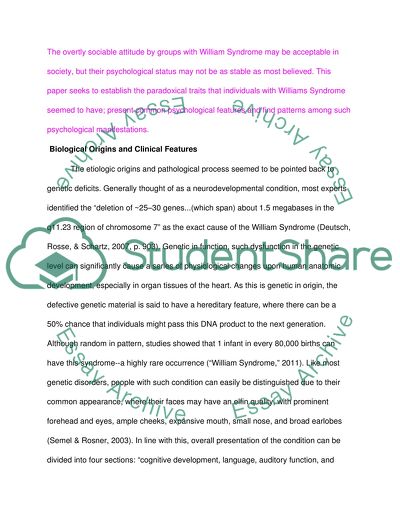Cite this document
(“Williams Syndrome in Psychology Research Paper Example | Topics and Well Written Essays - 1750 words”, n.d.)
Retrieved from https://studentshare.org/family-consumer-science/1416939-williams-syndrome-in-psychology
Retrieved from https://studentshare.org/family-consumer-science/1416939-williams-syndrome-in-psychology
(Williams Syndrome in Psychology Research Paper Example | Topics and Well Written Essays - 1750 Words)
https://studentshare.org/family-consumer-science/1416939-williams-syndrome-in-psychology.
https://studentshare.org/family-consumer-science/1416939-williams-syndrome-in-psychology.
“Williams Syndrome in Psychology Research Paper Example | Topics and Well Written Essays - 1750 Words”, n.d. https://studentshare.org/family-consumer-science/1416939-williams-syndrome-in-psychology.


